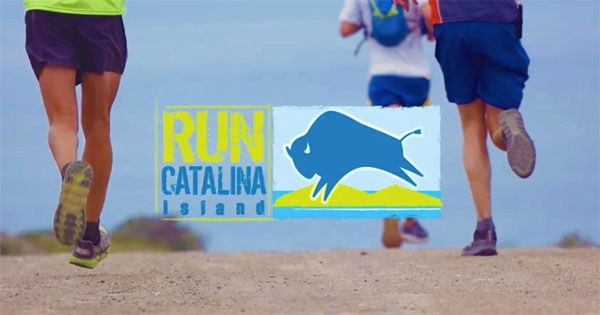He is lying in a sleeping bag on the side of a grassy hillside. The full moon enhances the stars that surround Bobby Lopez and his fellow Catalina Marathoners. This was in the early days, mind you, when the runners were dropped off by boat the day before the race. This was before the athletes stepped up to hotels and beds and a before dawn boat trip from sleepy Avalon to the start at the Isthmus.
Back then you camped out near the area called Twin Harbors, got up in the morning and dragged yourself across 26.2 miles of spectacular trails with 4,000 feet of climbing, gathered your sleeping bag and backpack at the finish and staggered off to the boat for your trip back to Long Beach.
This story takes us back 37 years, three years into the Catalina Marathon’s now 40 year history. Lopez had eaten dinner and enjoyed a few drinks with the other Catalina Marathon pioneers. There might have been 100 in total. He had ignored the suggestion that they not bring food with them back to their sleeping bags because wild boars, that run wild on the island along with their friends the buffalo, tend to be attracted to anything somewhat edible.
“I snuck these chocolate chip cookies back with me after dinner and had them in my sleeping bag,” Lopez remembers.
“In the middle of the night I hear this snorting and this huge thing is pushing me and my sleeping bag down the hill. I opened my eyes and I was petrified. It was a huge boar and he wanted my cookies!”
Bobby Lopez was becoming an icon.
Every March he returned to Catalina to run the marathon and keep his streak alive. But then came 1999, the 21st running of the event. By this time Lopez was staying in town in a warm bed and then taking the boat to the start, just like most everyone else. But some of the old timers still camped on the hillsides.
“When I stopped camping, they started calling me Condo Man,” he laughs. As was his habit, Lopez was out partying until about 12:45 the night before the race.
But somehow he slept through his alarm and woke up at 5:45am. The boat left town at 5:00 am without him. “Have you ever had your car stolen?” he asked. “That’s what it felt like. I’m standing there at 5:45am looking for the boat, knowing it was gone, but not believing it was gone,” recalls Lopez. “I’m thinking I’ve got to do something.” He called the helicopter company, but the office wouldn’t open until 9:00 am. Too late.
The taxis couldn’t get him to the other side of the island in time. “I went to the finish line and got someone to verify my start,” he says. “I was going to run from the finish back to the Isthmus.
At 7:00 am, BAM! I took off. It was so lonely running up those big hills that you usually come down at the end of the marathon. ‘This isn’t fair,’ I said to myself. ‘I’m working my butt off.’ It was really boring with no one to talk to.”
Eventually he started to see the marathoners on their trek to Avalon. “They’re going ‘Lopez, you’re going the wrong way!”
I’m like ‘duhhhhhhh!’”
Finally he ran into some aid stations and was able to get something to eat and drink. But then, as he came closer to the start, there were no more runners and the aid stations were all packed up and put away.
He found some morsels on the ground and a few half empty cups to drink out of. Then he was done and another issue became pretty important to him:
Now that he was 26.2 miles away from Avalon, how the heck was he going to get back to town?
“I was lucky,” he says. “The sheriff who started the marathon was in his car reading his paper and had fallen asleep. I tapped on the window and woke him up. I told him my story and had him validate my finishing time. I told him that I didn’t have any money and I didn’t have any way to get back to town.
Run Catalina – Catalina Island Marathon from Project Talaria on Vimeo.
He goes ‘I haven’t been to town in a couple of weeks so I’ll drive you, but I always stop at the airport for breakfast when I go to town.’
He paid for my breakfast and took me to the finish line where I gave the race director my time and kept my streak alive.”
He is asked about the attraction for a marathon that started with a handful of entrants but now sells out with over 700. “It’s the camaraderie,” he insists. “From the beginning, the race drew college professors, car mechanics and electrical engineers. It really didn’t matter what you did for a living. All we cared about was running.”
To find out more or to register for the Catalina Island Marathon, go to www.runcatalina.com
[maxbutton id=”4″]



